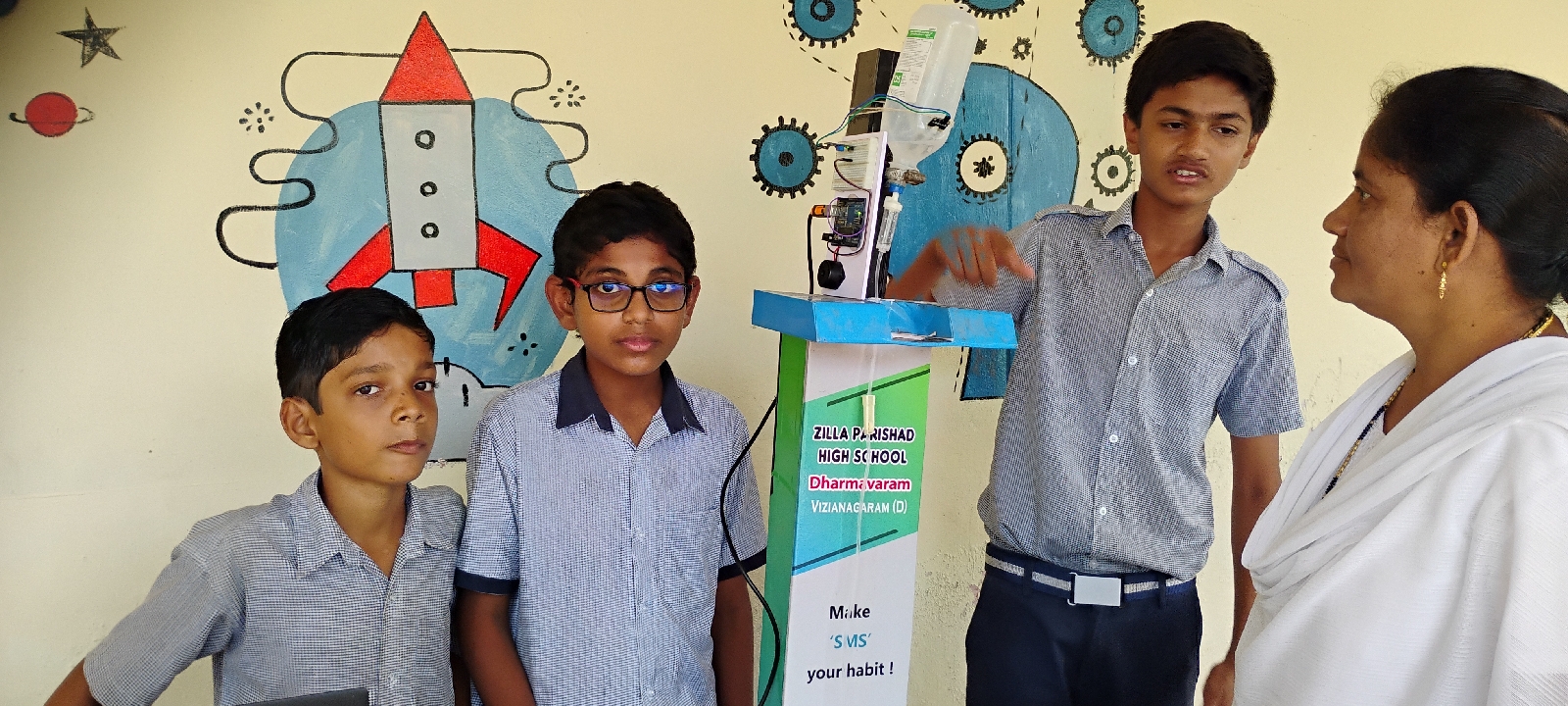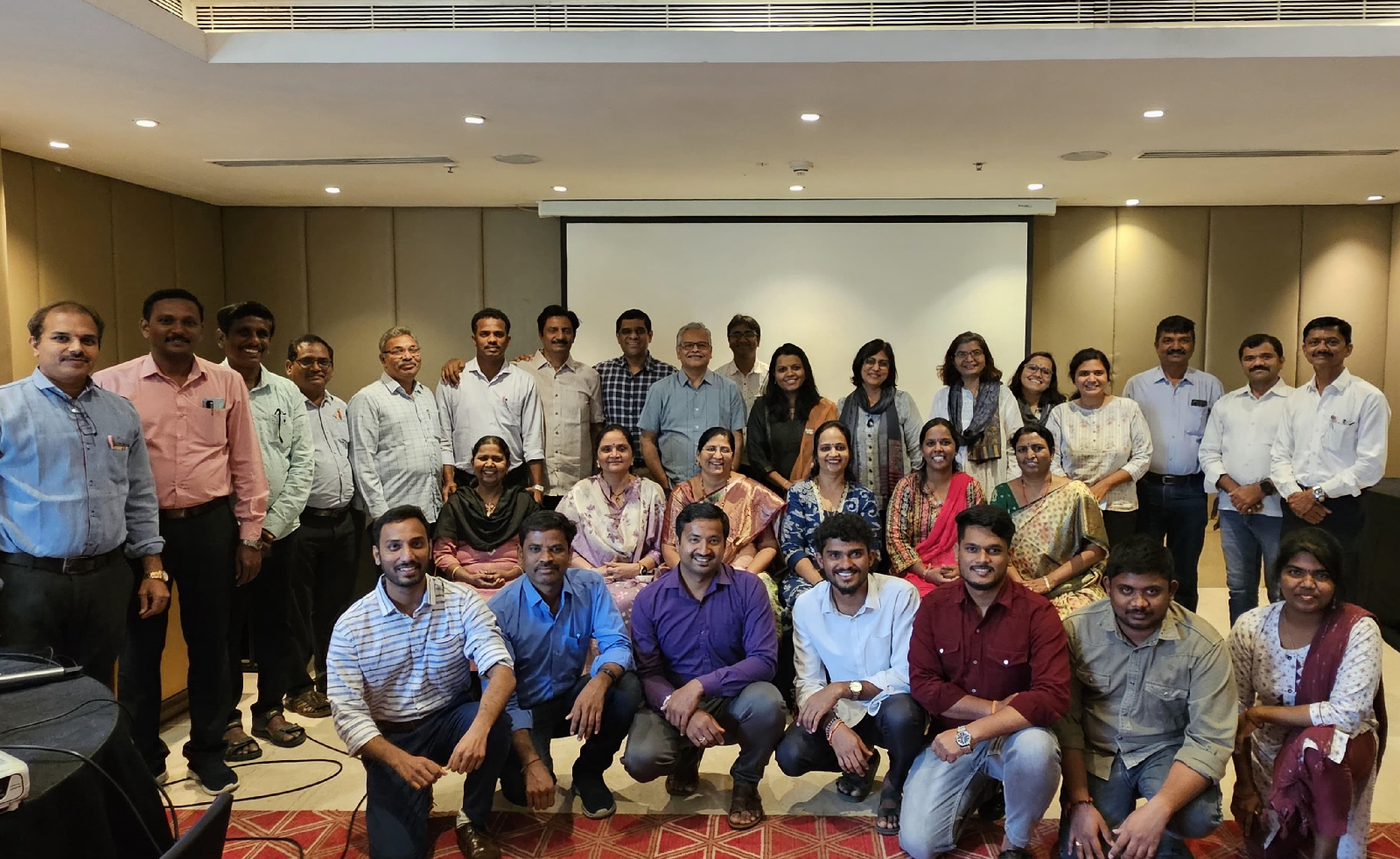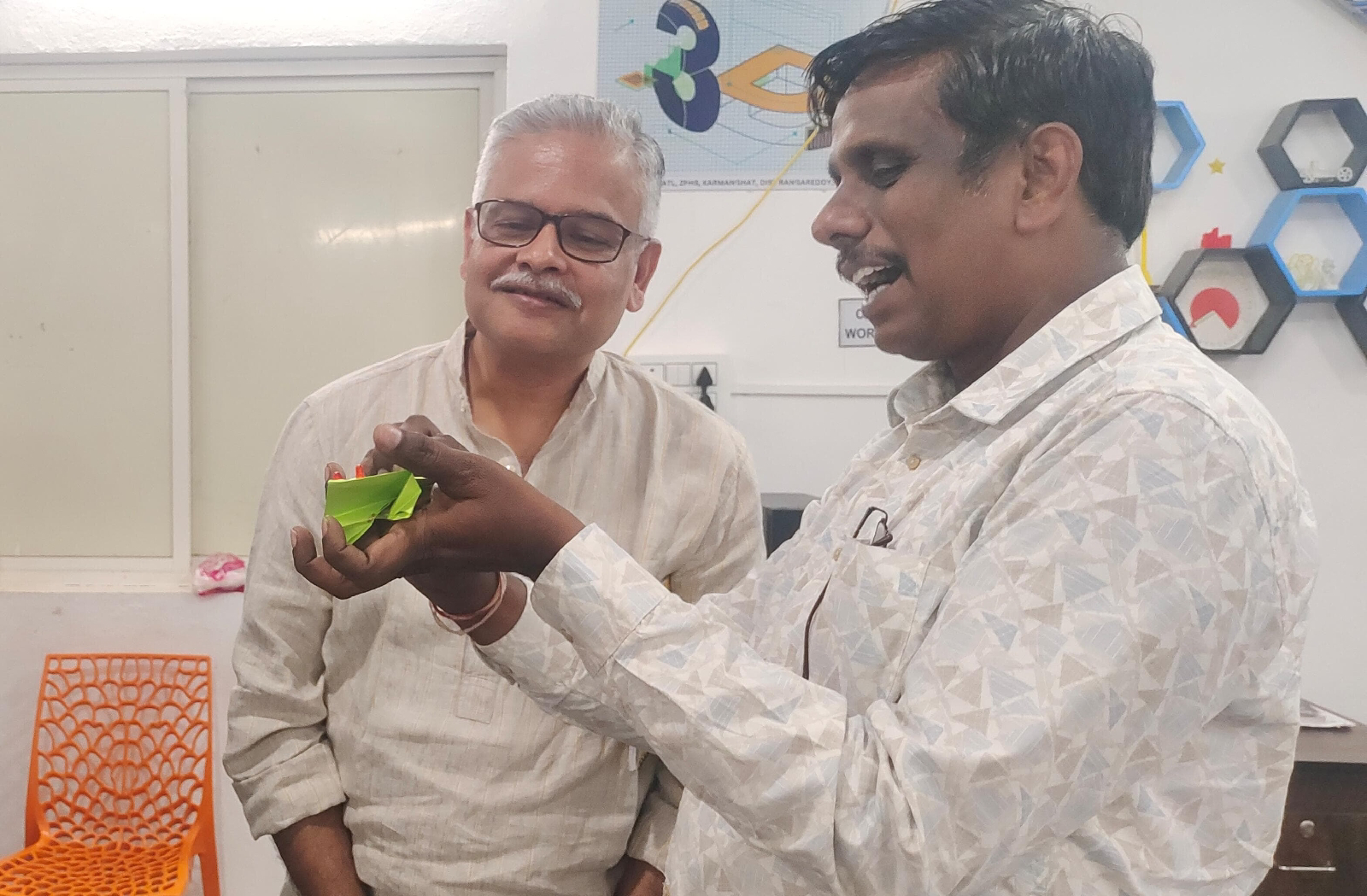Analysis of SIM 2024-25 Registrations: Trends and Insights into STEM and ATL
Introduction
The SIM 2024-25 registration data reveals significant disparities among Indian states in adopting STEM (Science, Technology, Engineering, and Mathematics) education and ATL (Atal Tinkering Lab) curricula. This analysis delves into the top-performing states, challenges faced by others, and the broader impact of various initiatives based on the provided data.
Students of Andhra Pradesh with thei innovation
1. Factors Encouraging STEM and ATL Curriculum in the Top Five States:
The top five states in terms of participation and registrations are Tamil Nadu, Kerala, Andhra Pradesh, Telangana, and Karnataka. Their collective performance is reflected in the following figures:
Total Schools: 25,964
Teams Registered: 1,31,067
Total Students: 5,03,796
Ideas Submitted: 68,966
Key Encouraging Factors:
Comprehensive Policies:
States like Tamil Nadu and Kerala integrate STEM into mainstream education, ensuring a broader reach.
Investment in Infrastructure:
Tamil Nadu alone accounts for 8,465 schools, with 3,36,542 students participating, demonstrating the state's commitment to education technology.
Teacher Training:
Continuous professional development ensures educators are equipped with modern teaching methodologies.Awareness
Campaigns:
Proactive measures have increased community and student participation.
2.Restrictions and Inhibitory Factors in Poorly Performing States
The remaining 23 states, with a total of 28,451 schools, have registered significantly
lower participation:
Teams Registered: 1,63,206
Total Students: 6,14,141
Ideas Submitted: 32,330 (only 31.91% of submitted ideas nationally).
Challenges:
Resource Limitations: Lack of proper ATL labs and STEM kits.Awareness Issues: Rural areas have limited exposure to the benefits of ATL and STEM programs.
Insufficient Training: Teachers in underperforming states often lack training in hands-on learning methods.
Policy Gaps: Weak policy frameworks hinder implementation.
3.Impact of UNICEF and Vigyan Ashram, Pune:
UNICEF and Vigyan Ashram have focused on enhancing STEM education in rural and underprivileged schools. Their impact is visible in several regions
Teacher Training: Programs led by Vigyan Ashram, focusing on DIY methodologies, have enabled hands-on learning.Increased Participation: Schools adopting these initiatives show higher student engagement in STEM activities.
Bridging Gaps: Targeted interventions have helped reduce disparities in resource allocation.
4.Role of Higher Education Officials:
Education department officials have played a critical role in driving ATL adoption.
Strategic Implementation:
Monitoring ATL lab setups and ensuring proper utilization of resources.
Awareness Drives: Encouraging participation through competitions and exhibitions.
Collaboration:
Facilitating partnerships with organizations like UNICEF and Vigyan Ashram for additional support.
5.Impact of the Hub-and-Spoke Strategy
The hub-and-spoke model, where well-equipped schools (hubs) mentor nearby under-resourced schools (spokes), has significantly impacted.
Positive Outcomes: Increased reach of STEM education to underserved areas.
Data Evidence:
Schools linked with hubs show better submission rates and participation levels.
Challenges:
Coordination issues and resource-sharing conflicts in certain regions.---
6. Impact of Taskforce Teams
Taskforce teams, comprising educators and policymakers, ensure smooth implementation of ATL initiatives:
Monitoring and Evaluation:
Regular assessments and corrective actions drive program success.Resource Allocation: Targeted distribution of funds and resources boosts efficiency.---
7. Tamil Nadu's Success Without UNICEF and Vigyan Ashram Tie-Ups
Despite no formal tie-up with UNICEF and Vigyan Ashram, Tamil Nadu leads in participation:
Data Highlights:
Schools: 8,465
Teams Registered: 70,386
Students: 3,36,542
Ideas Submitted: 33,685
Reasons for Success:
State-driven initiatives focusing on inclusivity and innovation.Robust community and teacher engagement strategies.Policy focus on technology-driven education.---
8. Why Only Top Five States Promote ATL Effectively
The top five states collectively account for 68.09% of submitted ideas, demonstrating their effective promotion of ATL programs.
Leadership in Governance:
Proactive leadership ensures proper implementation.
Economic Advantage:
Higher budget allocations for education and technology.
Cultural Attitudes:
High emphasis on education and innovation as societal priorities.---
9. Long-Term ImpactsPositive Impacts:
Students develop critical thinking and problem-solving skills.Equitable access to education reduces societal gaps.Strengthens India’s position in global innovation.
Potential Negative Impacts:
Persistent disparities between top-performing and underperforming states.Over-reliance on technology may overlook other important educational aspects.---
Conclusion
The SIM 2024-25 data provides valuable insights into the successes and challenges of STEM and ATL education in India. While top-performing states serve as models of excellence, focused interventions are needed in underperforming states to bridge gaps. Initiatives like UNICEF and Vigyan Ashram’s programs, along with hub-and-spoke models and taskforce teams, have proven effective but require expansion. By addressing current challenges, India can ensure a robust and equitable future in STEM education.




Data taken from aim.gov.in , School Innovation Marathon 2024 portal
ReplyDelete